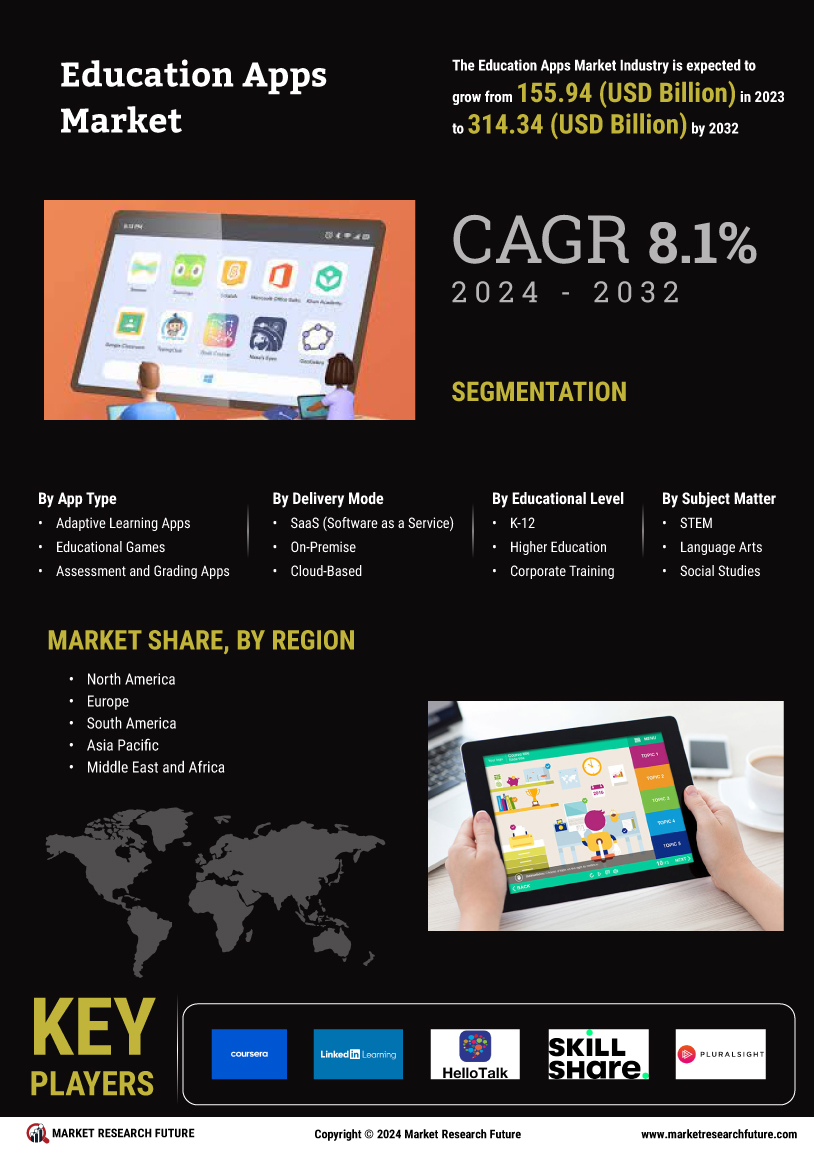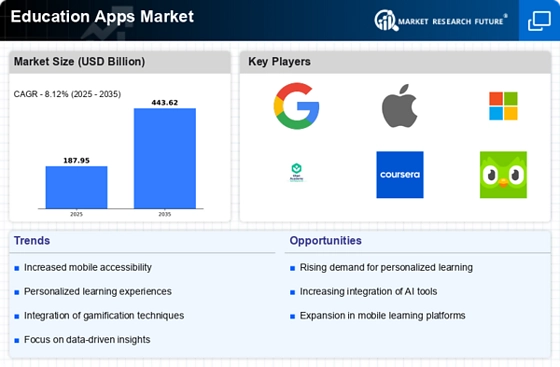Emphasis on Skill Development
The growing emphasis on skill development and vocational training is reshaping the Education Apps Market. As industries evolve and the job market becomes increasingly competitive, there is a heightened focus on equipping learners with practical skills. Educational apps that offer courses in coding, digital marketing, and other in-demand skills are witnessing a surge in popularity. Recent statistics indicate that the global e-learning market for professional development is expected to exceed 200 billion dollars by 2025. This trend underscores the importance of lifelong learning and continuous skill enhancement, driving demand for innovative educational applications. Consequently, the Education Apps Market is likely to see a proliferation of apps designed to meet the needs of learners seeking to advance their careers.
Increased Adoption of Mobile Devices
The proliferation of mobile devices has catalyzed the Education Apps Market, enabling learners to access educational content anytime and anywhere. As of 2025, it is estimated that over 80 percent of students utilize smartphones or tablets for educational purposes. This trend suggests a shift towards mobile-first learning solutions, which are often more engaging and interactive. The convenience of mobile apps allows for personalized learning experiences, catering to diverse learning styles and preferences. Consequently, educational institutions and content providers are increasingly investing in mobile app development to meet the demands of tech-savvy learners. This growing reliance on mobile technology is likely to drive innovation within the Education Apps Market, as developers seek to create more effective and user-friendly applications.
Growing Investment in EdTech Startups
The increasing investment in educational technology (EdTech) startups is significantly impacting the Education Apps Market. Venture capital funding for EdTech has reached unprecedented levels, with investments surpassing 10 billion dollars in recent years. This influx of capital is fostering innovation and encouraging the development of cutting-edge educational applications. Investors are particularly interested in startups that leverage technology to enhance learning experiences, improve accessibility, and address educational challenges. As a result, the Education Apps Market is becoming increasingly dynamic, with new entrants continuously emerging to offer unique solutions. This trend not only stimulates competition but also drives advancements in app functionality and user engagement, ultimately benefiting learners and educators alike.
Integration of Artificial Intelligence
The integration of artificial intelligence (AI) into educational applications is transforming the Education Apps Market. AI technologies enable personalized learning experiences by analyzing user data and adapting content to meet individual needs. As of 2025, it is estimated that AI-driven educational tools will account for a significant portion of the market, with projections suggesting a growth rate of over 25 percent annually. This technological advancement allows for real-time feedback and assessment, enhancing the overall learning experience. Furthermore, AI can assist educators in identifying students who may require additional support, thereby improving educational outcomes. The increasing reliance on AI in education signifies a pivotal shift in how educational content is delivered and consumed, positioning the Education Apps Market for substantial growth.
Rising Demand for Remote Learning Solutions
The ongoing demand for remote learning solutions has significantly influenced the Education Apps Market. As educational institutions continue to embrace online learning, the need for effective educational apps has surged. Recent data indicates that the online education sector is projected to reach a valuation of over 300 billion dollars by 2025. This growth is largely attributed to the increasing acceptance of digital learning tools among educators and students alike. Education apps that facilitate remote learning, such as virtual classrooms and collaborative platforms, are becoming essential components of modern education. This trend not only enhances accessibility but also fosters a more inclusive learning environment, thereby propelling the Education Apps Market forward.
























Leave a Comment